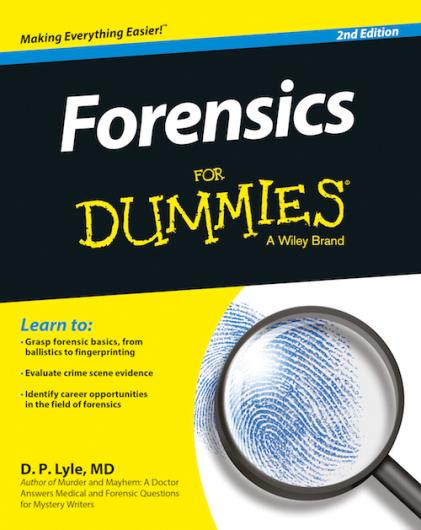Asphyxia is the interruption of oxygen (O2) supply to the body, particularly the brain. Normally, air contains O2 and, when breathed in, it passes into the blood, using hemoglobin as a transport molecule, where it is distributed to the tissues. Any interruption of this delivery chain can lead to death from asphyxia.
The air might be deficient in oxygen such as at high altitude or when another gas such as carbon dioxide (CO2) accumulates, depressing the O2 content to dangerous levels. Or flow into the mouth and nose could be restricted by smothering, choking, or strangulation, or by anything that restricts the expansion of the chest. Or the inhaled air could contain a toxin such as carbon monoxide (CO) or cyanide (CN), and these, in turn, interfere with O2 delivery to the tissues.
Burking is the term applied to asphyxial deaths that result from someone sitting on another in a fashion that restricts breathing. The victim dies from asphyxia. This is a form of Mechanical Asphyxia, where the movement of the chest wall is restricted to the point that breathing isn't possible. Burking refers to the famous case of Burke and Hare.

From FORENSICS FOR DUMMIES:
Applying Pressure: Mechanical AsphyxiaMechanical asphyxia results when some external force applied to the body prevents the expansion of the chest and leaves the victim unable to breathe. A person trapped beneath a heavy object, such as a car or a collapsed wall or ceiling, can die because the force of the external pressure prevents the victim from taking in a breath.
A boa constrictor kills in exactly this way. This muscular species of snake wraps itself around its prey. Each time the prey exhales, the snake coils a little tighter. So, each successive breath becomes increasingly shallower until the prey can't take another breath. Death follows quickly.

Experts have come to know a particular form of mechanical suffocation as Burking. William Burke was a merchant of sorts around Edinburgh, Scotland, in the early 1800s. In 1827, he hooked up with William Hare, who ran a beggars hotel in the village of Tanners Close. In December of that year, a resident of the hotel died, and Burke arranged to sell the body to a Dr. Knox, who needed corpses for his dissection demonstrations. Burke and Hare loaded a coffin with bark and buried it in front of many witnesses. They then delivered the body to Dr. Knox and received seven pounds and ten shillings. The men struck an arrangement whereby Burke and Hare would deliver the doctor more bodies for eight pounds in summer and ten in winter. (Apparently grave robbing was more difficult when the ground was cold.)
Burke and Hare began digging up fresh corpses for their new enterprise, but the local populace refused to die fast enough for the greedy men. They began kidnapping and killing people who were not likely to be missed. Burke sat on his victims, holding their mouths and noses closed until they suffocated, after which Burke and Hare delivered the corpse and collected their fee.
A lodger at the hotel notified authorities when she discovered the sixteenth and last victim beneath a bed. Police arrested the two men. Hare then cut a deal and testified against Burke. Burke was convicted and experienced asphyxia for himself when he was hanged on January 28, 1829, an event attended by as many as 40,000 people.
Burking is alive nearly 200 years later. It seems that 325-pound woman sat on her 9-year-old cousin to punish her for some indiscretion. Unfortunately, the child died from mechanical asphyxia--"Burking."
